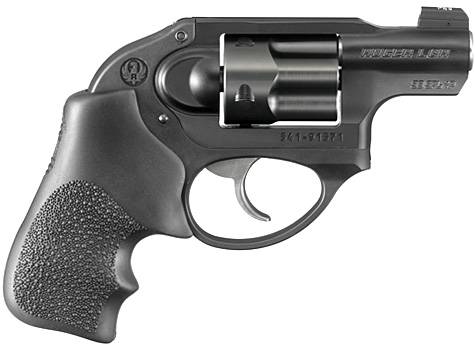S&W Bodyguard vs. Ruger LCR with Lasers: Initial Impressions
May 1, 2011
 I went to the NRA Convention this morning in Pittsburgh, PA and I’m glad I did. I got to meet a lot of fine people and talk to a whole host of dealers of various products. But the main reason I went to the show was to compare concealed carry revolvers for my wife. My wife has trouble with operating the slide on a 1911 style 9mm in any of the various forms. And if we were in a dangerous situation, I don’t want either one of us to be having to remember what to do to make a gun work. It has to be natural and second nature. The only slide operated pistol she has felt comfortable with is a Bersa style 380. The slide is easy and requires a light touch. And we may wind up getting her one of those, after we take to the range to test fire a friend’s LCR.
I went to the NRA Convention this morning in Pittsburgh, PA and I’m glad I did. I got to meet a lot of fine people and talk to a whole host of dealers of various products. But the main reason I went to the show was to compare concealed carry revolvers for my wife. My wife has trouble with operating the slide on a 1911 style 9mm in any of the various forms. And if we were in a dangerous situation, I don’t want either one of us to be having to remember what to do to make a gun work. It has to be natural and second nature. The only slide operated pistol she has felt comfortable with is a Bersa style 380. The slide is easy and requires a light touch. And we may wind up getting her one of those, after we take to the range to test fire a friend’s LCR.
I spoke with both the Smith & Wesson folks and the Ruger folks and both were very helpful. The Bodyguard 38 revolver uses a new design of a gear, claw type advance on the cylinder and has a polymer frame I believe. What was nice about the Bodyguard was the ease of the trigger pull. I would have to say that the gun was a bit smoother than the Ruger and lighter on the trigger. If neither gun had a laser trace, I would probably pick the S&W for my wife. It just felt a little better in my hand.

The Ruger booth had plenty of LCR’s to handle and the trigger pull was just slightly harder than the Bodyguard and if I had not just tested the other one, I probably would not have been able to tell the difference. Both the Bodyguard and the LCR come with optional embedded lasers. S&W has one of its own design and the LCR comes with the Crimson Trace. I had to go down to the Crimson Trace booth to try an LCR with an embedded laser because they did not have one at Ruger’s.
The LCR’s laser uses the patented Crimson Trace grip activation. There is a button that rests under the index finger and when you squeeze the gun, the laser lights up. My hand was a little big for the gun, and so it took a few trials to get the laser to light up consistently. I found I was putting more pressure between my thumb and trigger finger than on the grip with my index finger. However with practice and my wife’s slightly smaller hand, I think this would become a natural fit for her.
That brings me to my discomfort with the S&W custom laser. In order to turn on the the S&W laser, you have to press a button on the top of the revolver to the right of where the hammer would normally be. (Both of these models have internal firing pins and no external hammers.). Turning on the laser trace was awkward and required me to use my other hand while holding the revolver with my right hand. All I can say is that this unnatural motion would be the wrong thing to have to remember how to do in an unexpected crisis situation. You don’t want to have to think when you are fighting for your life. And if it were dark, you may have trouble finding the button to turn on the laser. That is better for home defense when you hear the breaking glass downstairs, but not when you are assaulted on the streets. Then you need immediate reactions and no thought about the mechanics of the gun.
Verdict: if the choice is between the two revolvers and you want or need a laser trace, I would pick the LCR with the Crimson Trace, no questions asked. We’ll see how my wife likes it when we get out to the range. I kind of liked the Bersa style 380 for a small concealed carry, but the problem with any slide operating pistol is that you have to either keep it cocked and loaded, or you have to have time to operate the slide. A revolver seems safer and a hammerless revolver seems unlikely to catch on something or fire while pulling it out of a purse or holster, but a 38 +P has enough firepower to make an adversary think twice; especially when he is not expecting a lady to be packing!
-Jefferis Peterson